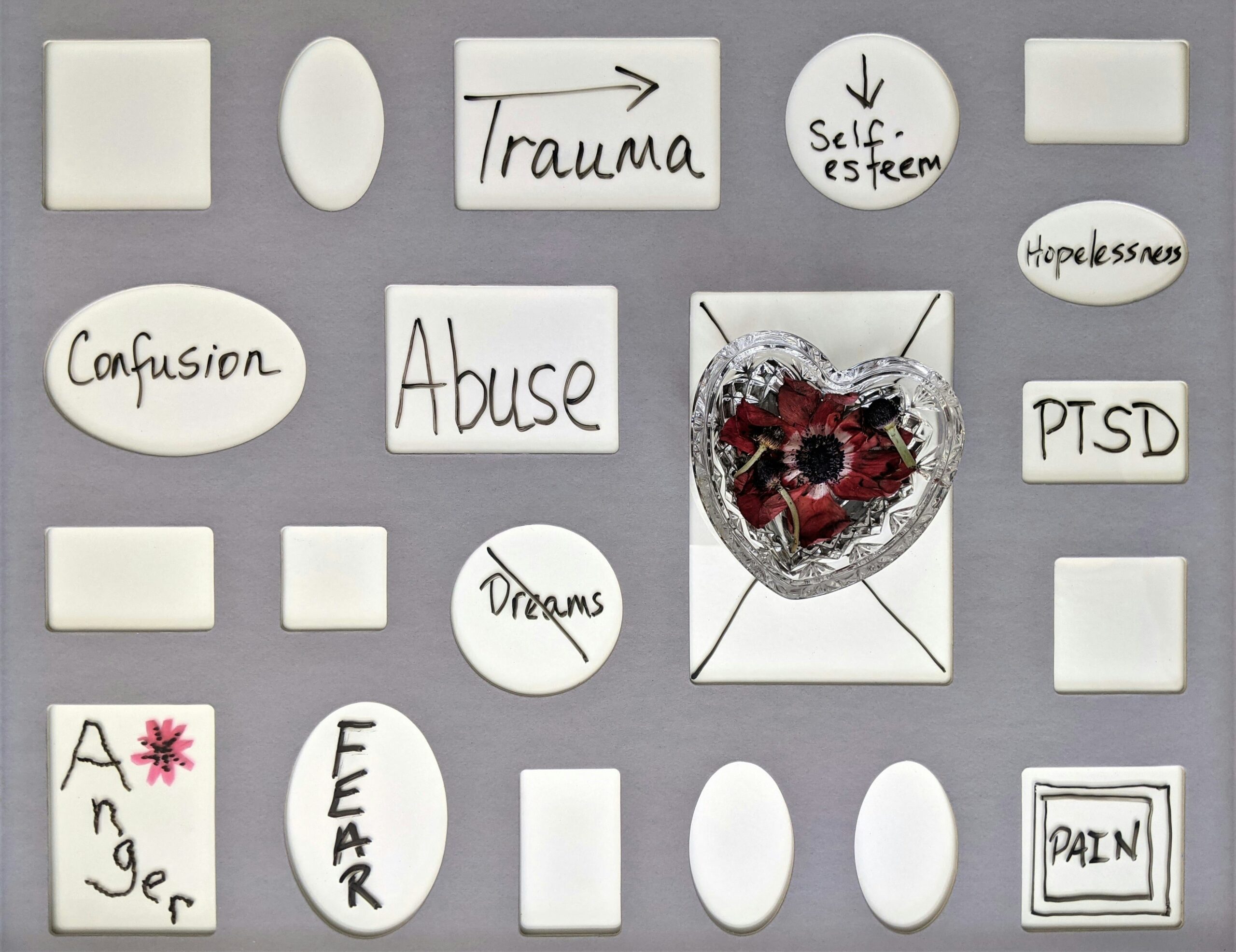Why Real Healing Begins Inside
By Cosset Moi Editorial • • Fact-checked with latest trauma & self-image research
In a world obsessed with glow-ups and filters, it’s tempting to believe a makeover can erase our deepest wounds. Yet, for millions living with trauma, beauty routines can become a mask that hides pain—not a path to true self-acceptance. Recent science reveals that real healing—especially for those with a history of emotional neglect, abuse, or gaslighting—must start from within. Here’s why the most profound makeovers begin beneath the surface, and how you can finally reclaim your self-worth.

(Photo by Susan Wilkinson)
The Hidden Link: How Trauma Shapes Self-Image and Beauty Rituals
Why the Past Lingers in the Mirror
Trauma is not just a “bad memory.” According to the American Psychological Association (2024), trauma fundamentally alters how we see ourselves. Whether you endured years of narcissistic abuse, childhood neglect, or a toxic relationship, your brain learns to scan for threat—and, often, to criticize your own reflection. Dr. Bessel van der Kolk, author of the groundbreaking book The Body Keeps the Score, explains:
“After trauma, the body and brain are always on alert. We may look in the mirror and see only flaws, because our nervous system is still expecting harm.”New research from Nature’s Translational Psychiatry (2024) shows that survivors of chronic stress and emotional abuse often develop a “distorted mirror” effect: seeing themselves through the lens of shame, fear, and perfectionism—no matter how beautiful others may see them.
– Dr. Bessel van der Kolk
Makeovers as Shields: When Beauty Becomes Emotional Armor
The Psychology of the Beauty Mask
If you’ve ever reached for a new lipstick or booked a hair appointment after a painful breakup, you’re not alone. Beauty routines can offer a sense of control when life feels chaotic. For trauma survivors, this urge is even stronger. According to a 2024 study in Current Research in Behavioral Sciences, over 63% of participants with unresolved trauma reported using beauty makeovers to “reset” after emotional upheaval.
However, while self-care rituals are healthy, the danger is when beauty becomes a mask—a shield that hides vulnerability. Clinical psychologist Dr. Thema Bryant notes:
“Survivors may use appearance as a shield. The risk is that the real wounds go unaddressed. True healing means letting yourself be seen, scars and all.”
– Dr. Thema Bryant, APA President
- **Red flag:** Are you anxious when leaving the house without makeup? Is your self-worth tied to compliments?
- **Sign of healing:** You can embrace both beauty rituals and days off. You see self-care as nourishment—not a mask.
For more on the deep science of makeovers, see our post: Complete Makeover Steps to a Gorgeous New You

(Photo by Stefano Bucciarelli)
Narcissistic Abuse, Shame, and the Never-Enough Makeover
Breaking the Cycle of Perfectionism
Narcissistic abuse is uniquely corrosive to self-image. Victims often endure years of gaslighting, blame, and “moving goalposts”—leaving them feeling unlovable and never enough. According to Psychology Today (2024), this kind of trauma “hijacks” self-perception, causing survivors to chase external perfection as a way to earn safety or approval.
“Narcissistic abuse attacks the very foundation of identity. Makeovers become a way to try and ‘fix’ what was never broken—only hidden by shame.”
– Dr. Ramani Durvasula, Clinical Psychologist & Author of Should I Stay or Should I Go?
The “never enough” trap means every new look or product offers only a brief boost. Without inner repair, the cycle repeats.
- **Perfectionism warning:** Constantly seeking new trends, unable to enjoy current progress
- **Healing mindset:** Recognizing you are worthy before, during, and after any makeover
Explore the science of self-image further in our article: Creativity and Depression: Tortured or a Genius?
The Body Remembers: Physical Signs of Emotional Pain
When Stress Shows Up on Your Skin (and More)
Trauma doesn’t just live in the mind. As Dr. van der Kolk’s research proves, unhealed emotional wounds often show up as physical symptoms: acne, hair loss, insomnia, digestive troubles, chronic pain. A 2025 study in Frontiers in Psychology found that unresolved trauma is a top predictor of inflammatory skin disorders, especially among women ages 18–45.
“Beauty rituals matter. But when stress and shame are held in the body, no cream or serum will truly heal until we address the root.”
– Dr. Alexis Young, Integrative Dermatologist
For more on skin and emotional wellness, see our review: Biotech Beauty: The Future is Here
The Makeover Myth: Why Outer Change Won’t Heal the Inside
Why Surface Fixes Can Backfire
While the “after” photos may light up Instagram, the truth is most survivors feel let down once the makeover high fades. Studies from Stanford Medicine (2023) show that dopamine surges (from likes or compliments) quickly return to baseline. If your inner story is “I’m not enough,” no external change can create lasting safety.
“A makeover can inspire, but if you’re looking to erase pain, the disappointment is sharper each time. Self-acceptance must come first.”
– Dr. Lisa Firestone, Trauma Recovery Author
- **Myth:** “If I just lose weight or change my face, I’ll finally feel happy.”
- **Truth:** Inner beliefs shape every “before and after”—not the other way around.
Real Healing: Self-Care Rituals for Trauma Survivors
Science-Backed Steps for Body and Soul
- Float tanks & sensory therapy: Sensory deprivation tanks are proven to lower anxiety and boost interoceptive awareness. (Scientific American, 2023)
- Somatic healing: Yoga, breathwork, and TRE (tension release exercises) “teach” the body a new baseline of safety, making beauty routines feel like nourishment instead of punishment.
- Mirror affirmations: 2 minutes a day of speaking gentle truths (“I am more than my reflection”) rewires negative self-talk, as found in a 2023 NCBI study.
- Journaling: Use trauma-sensitive prompts—see Magnificent Japan Journals—to process triggers and victories, not just daily events.
- Therapy: Seek EMDR, IFS, or trauma-informed therapy to rewrite your story and release shame.
- Community: Online support groups, survivor circles, and self-love workshops for connection and accountability.
- Gentle beauty rituals: Transform skincare and makeup into moments of mindfulness—apply each product as a “thank you” to your body, not as a fix for flaws.
“Self-care is only healing if it’s rooted in kindness. Listen to your nervous system, not just beauty trends.”
– Dr. Nicole LePera, Author of How to Meet Your Self
Discover more healing strategies in our series: Creativity and Depression: Tortured or a Genius?
Survivor Stories: Real Makeovers That Started Inside
How Healing Changes Everything
Meet Sophia, who spent years chasing the latest beauty trends after surviving a narcissistic partner. “Every time I changed my hair, I hoped I’d finally feel lovable,” she shares. Only after a year of somatic therapy and group support did she find, “My real makeover was learning to see myself as worthy—before anyone else did.”
Or Arun, who used float tanks and mindful skincare as part of his trauma recovery: “For the first time, I treated my skin like something precious—not a project to be fixed. That changed everything.”
Each survivor’s story is different, but the lesson is universal: Real healing transforms not only how we look, but how we *see* ourselves.
Conclusion: Claim Your Worth—Inside and Out
Beauty, trauma, and makeovers are forever linked—but not in the way glossy ads suggest. The latest science is clear: No external ritual can create self-worth, but loving rituals rooted in real healing can *reflect* your transformation to the world.
Ready to start your true makeover? Begin with therapy, self-kindness, and connection. Then, let every beauty ritual be a celebration—not a cover-up—of the person you’re becoming.
- Need help? Find a trauma-informed therapist or join an online survivor group.
- Try float tanks, yoga, or journaling—see what helps your body and soul feel safe again.
- Share your healing journey with us in the comments or on Instagram!
For more inspiration, read: Complete Makeover Steps to a Gorgeous New You

